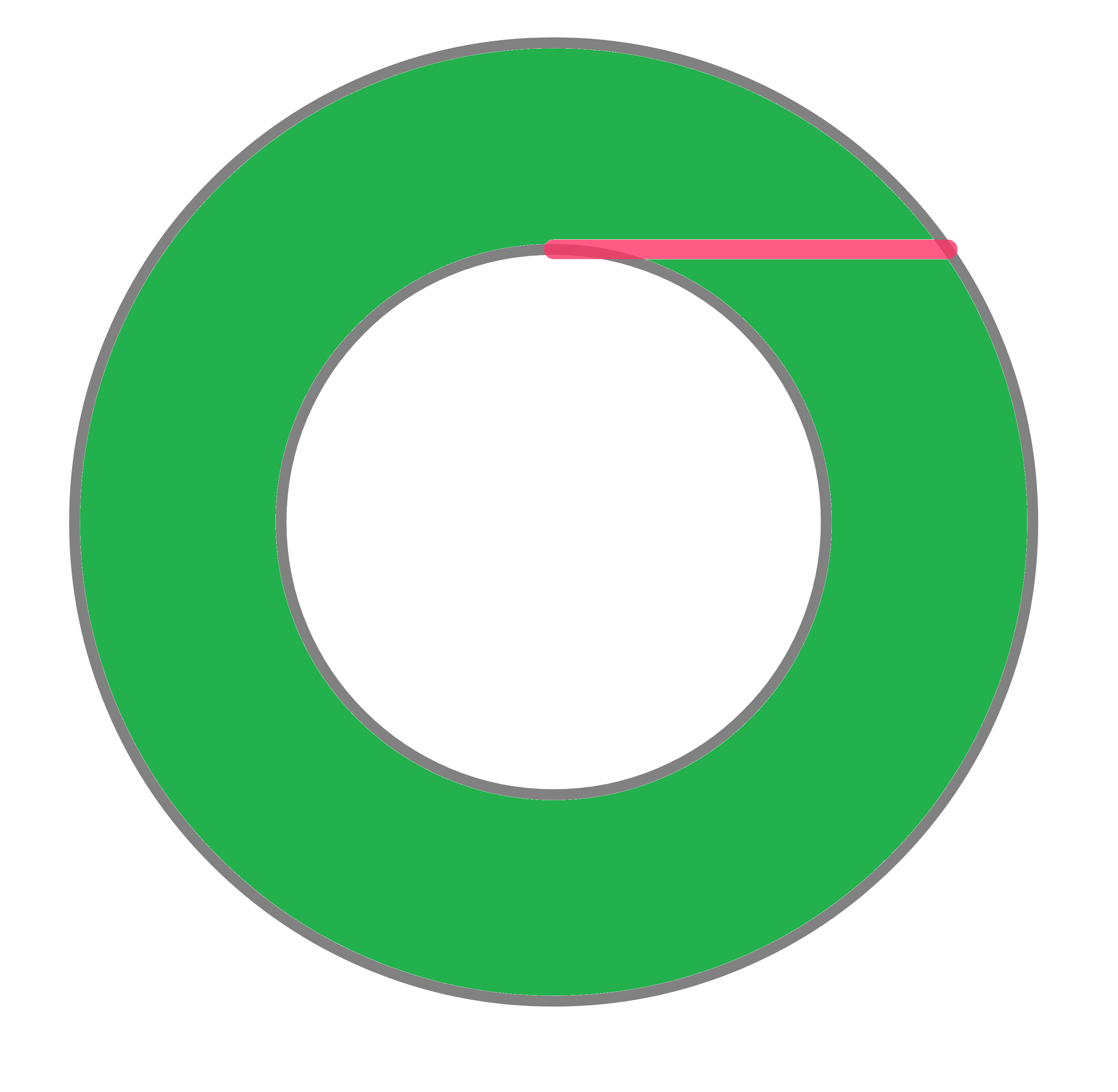Problems
A maths teacher draws a number of circles on a piece of paper. When she shows this piece of paper to the young mathematician, he claims he can see only five circles. The maths teacher agrees. But when she shows the same piece of paper to another young mathematician, he says that there are exactly eight circles. The teacher confirms that this answer is also correct. How is that possible and how many circles did she originally draw on that piece of paper?
What is the ratio between the red and blue area? All shapes are semicircles.
The marked pink segment (tangent to the inner circle) has length \(1\). Find the area of the green annulus.

The circles \(\sigma_1\) and \(\sigma_2\) intersect at points \(A\) and \(B\). At the point \(A\) to \(\sigma_1\) and \(\sigma_2\), respectively, the tangents \(l_1\) and \(l_2\) are drawn. The points \(T_1\) and \(T_2\) are chosen respectively on the circles \(\sigma_1\) and \(\sigma_2\) so that the angular measures of the arcs \(T_1A\) and \(AT_2\) are equal (the arc value of the circle is considered in the clockwise direction). The tangent \(t_1\) at the point \(T_1\) to the circle \(\sigma_1\) intersects \(l_2\) at the point \(M_1\). Similarly, the tangent \(t_2\) at the point \(T_2\) to the circle \(\sigma_2\) intersects \(l_1\) at the point \(M_2\). Prove that the midpoints of the segments \(M_1M_2\) are on the same line, independent of the positions of the points \(T_1, T_2\).
Three circles are constructed on a triangle, with the medians of the triangle forming the diameters of the circles. It is known that each pair of circles intersects. Let \(C_{1}\) be the point of intersection, further from the vertex \(C\), of the circles constructed from the medians \(AM_{1}\) and \(BM_{2}\). Points \(A_{1}\) and \(B_{1}\) are defined similarly. Prove that the lines \(AA_{1}\), \(BB_{1}\) and \(CC_{1}\) intersect at the same point.
We create some segments in a regular \(n\)-gon by joining endpoints of the \(n\)-gon. What’s the maximum number of such segments while ensuring that no two segments are parallel? The segments are allowed to be sides of the \(n\)-gon - that is, joining adjacent vertices of the polygon.
A circle is divided up by the points \(A, B, C, D\) so that \({\smile}{AB}:{\smile}{BC}:{\smile}{CD}:{\smile}{DA} = 2: 3: 5: 6\). The chords \(AC\) and \(BD\) intersect at point \(M\). Find the angle \(AMB\).
A circle is divided up by the points \(A\), \(B\), \(C\), \(D\) so that \({\smile}{AB}:{\smile}{BC}:{\smile}{CD}:{\smile}{DA} = 3: 2: 13: 7\). The chords \(AD\) and \(BC\) are continued until their intersection at point \(M\). Find the angle \(AMB\).
The bisector of the outer corner at the vertex \(C\) of the triangle \(ABC\) intersects the circumscribed circle at the point \(D\). Prove that \(AD = BD\).
The vertex \(A\) of the acute-angled triangle \(ABC\) is connected by a segment with the center \(O\) of the circumscribed circle. The height \(AH\) is drawn from the vertex \(A\). Prove that \(\angle BAH = \angle OAC\).